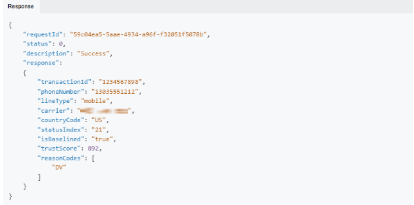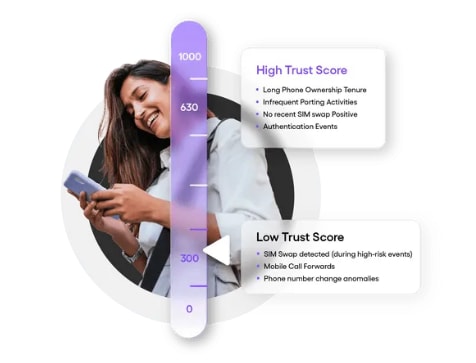Welcome back to the Identity Trends blog series! This is the third post in our series. Today, we’ll focus on the concept of phone number trustworthiness, a critical aspect of Trend #3: Reducing Fraud. Keep reading to find out what exactly phone number trustworthiness is and, more importantly, how you can leverage phone number trustworthiness to prevent fraud.
What is Phone Number Trustworthiness?
Phone number trustworthiness refers to the degree to which a phone number can be considered reliable or genuine. It is often used in the context of preventing fraud and scams, as well as verifying the identity of individuals.
Using phone numbers to verify online identity is a relatively new phenomenon. Unlike legacy identity verification methods using traditional data sources, like usernames or social security numbers, phone numbers can provide real-time identity authentication based on dynamic and current data. Real-time validation of these signals helps eliminate sophisticated fraud, such as synthetic identities.
Additional Resource: Move Over SSN – Here’s Why Phone Numbers Are the New National Identifiers
Various tools and techniques can be used to determine the trustworthiness of a phone number, such as checking it against known lists of fraudulent or spam numbers, conducting reverse phone number lookups, or using number risk scoring services such as Trust Score+™. However, it is important to note that no method can guarantee 100% accuracy, and scammers and fraudsters are constantly adapting their tactics to evade detection.
What are the benefits of Trust Score+™?
In today's digital age, fraud and identity theft are growing concerns for businesses and individuals. As more and more transactions take place online and using mobile devices, it becomes increasingly important to verify the identity of users and prevent fraudulent activity like account takeovers. This is where Prove's Trust Score+™ comes in.
Prove's Trust Score+™ provides a numerical score indicating the level of trustworthiness of a given phone number. Trust Score+ leverages phone number signals, proprietary data sources, and Prove’s more than 15 years of phone data to identify risks based on the history of that phone number while leveraging real-time data from Mobile Network Operator (MNO)/carrier data to track risky phone number behavior high-risk events (e.g., money movement, password changes, phone number updates, etc.).
The score is based on various factors, including the phone number's age or “tenure,” usage patterns, and association with known fraudulent activity. The Trust Score+™ API can be easily integrated into existing systems and workflows, supporting businesses to quickly and easily verify the identity of their users and prevent fraud. Below you will find an example of our API request and response to integrate Trust Score™ into your flow:
Trust Score+™ Request
Trust Score+™ Response
Trust Score+ provides banks, financial institutions, insurance companies, retail chains, and other organizations with a tool that can be applied to multiple use cases where knowing the fraud risk of a mobile-based transaction is critical.
How is the Trust Score+™ Measured?
The Trust Score+™ of a phone number will always fall between 0 and 1,000. The higher the Trust Score™, the better reputation of the phone number. A good rule of thumb and a Prove best practice is to consider trust scores greater than 630 as 'high', and trust scores 300 and below as ‘low’. If you were to leverage Trust Score™ to secure high-risk transactions such as a money transfer or password reset, for example, you would typically only green light or approve transactions tied to phone numbers that have high trust scores.
What are the most popular uses of Trust Score+™?
A popular use of Trust Score+™ by businesses is leveraging it as a trust indicator before sending a one-time passcode via SMS (“SMS OTP”) as a factor of authentication tied to a consumer’s mobile device. Trust Score+™ This helps businesses identify and evaluate potential risks, such as an insecure VOIP line, recent port activity, and/or low SIM tenure, before choosing to send the SMS OTP to the device and ultimately enabling access to their application or site. In other words, companies are empowered to fortify their OTP solutions by making an informed decision about whether an OTP should be sent.
For example, if Trust Score+™ is run prior to the SMS OTP being sent and comes back with an indication that the line type is VoIP or that a SIM swap has occurred recently, the company can choose to authenticate the consumer using a different method instead of sending an OTP.
Prove's Trust Score+™ API can help businesses improve their fraud prevention capabilities, enhance the user experience, and reduce costs, while also helping to ensure compliance with regulatory requirements.










Top comments (0)